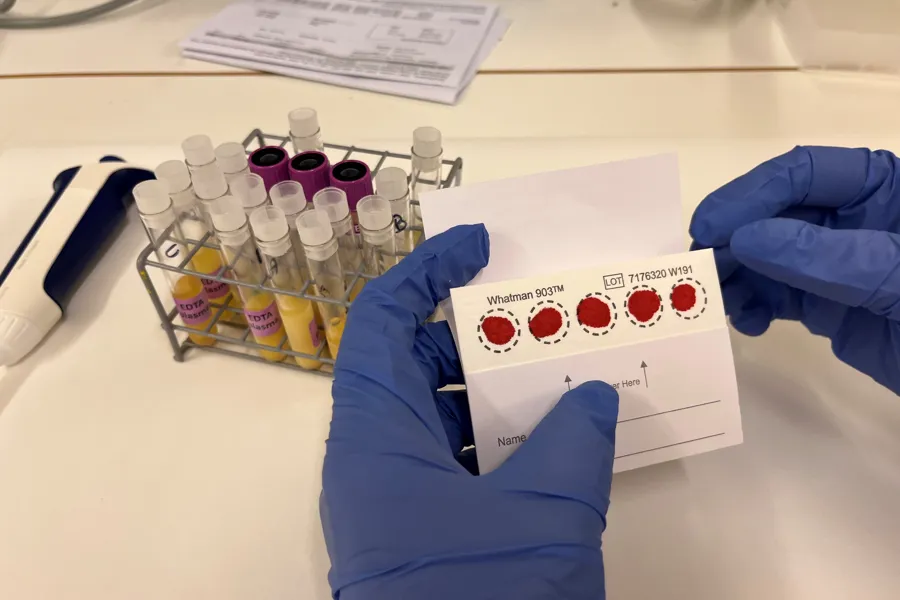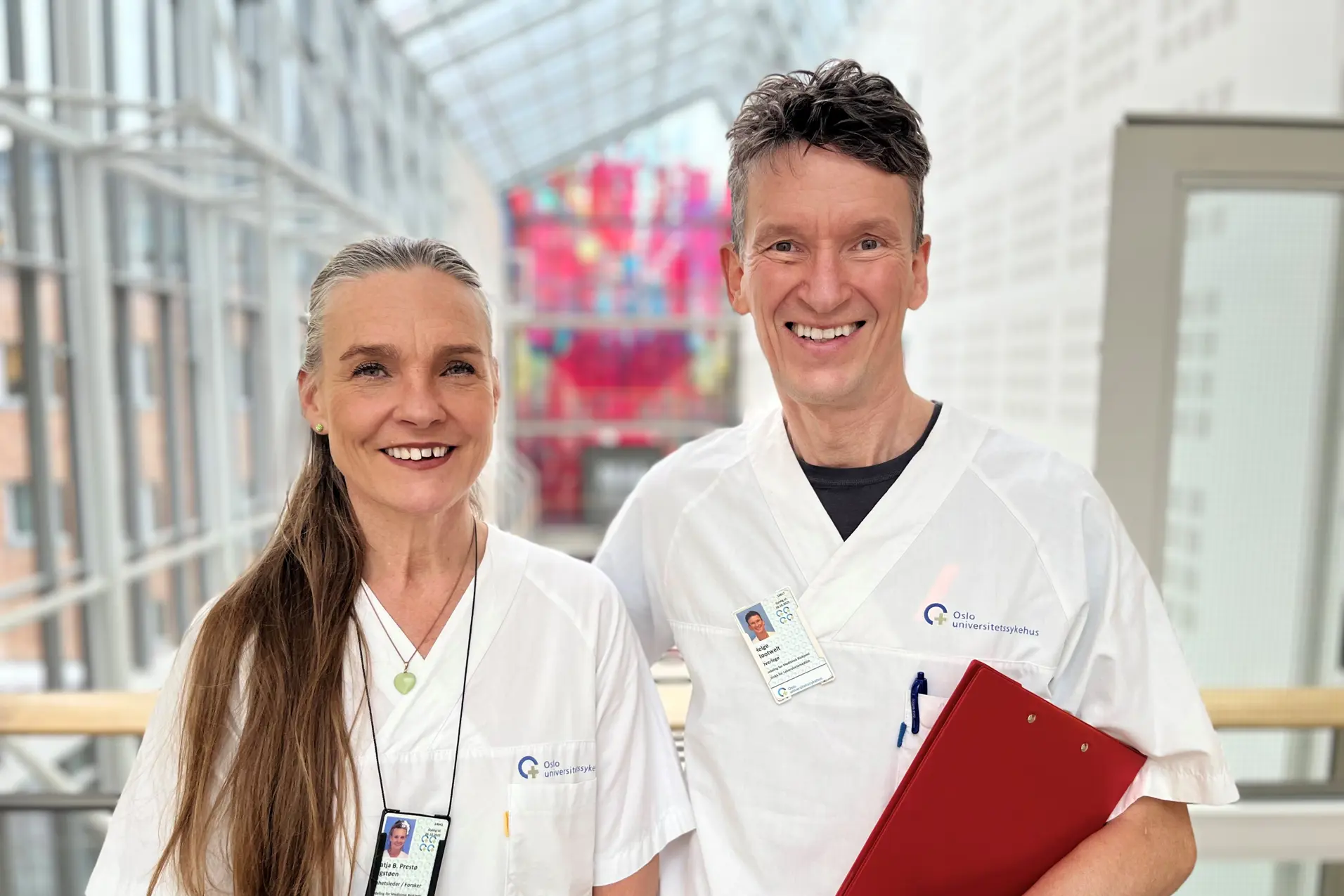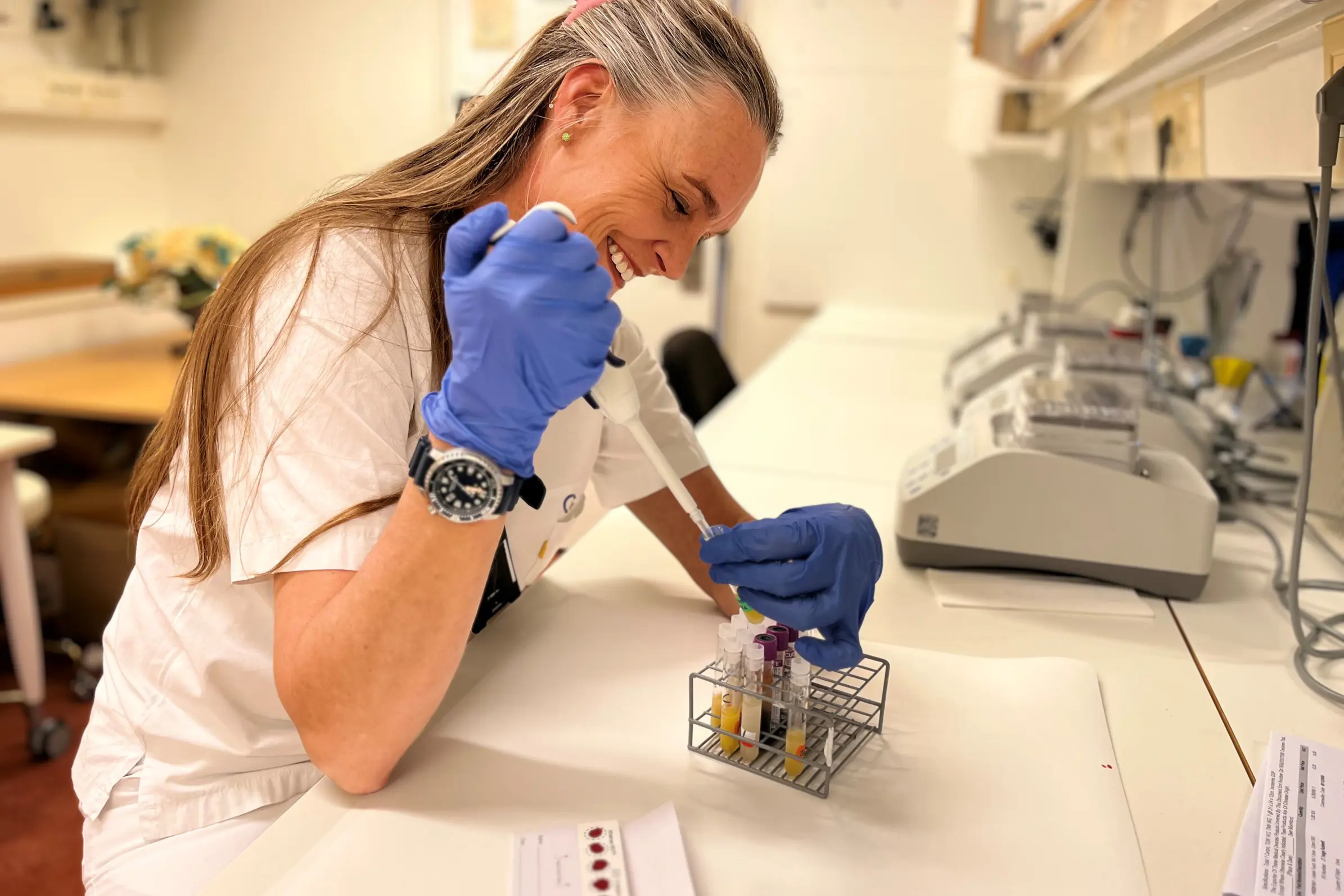Metabolomics can Contribute to Faster Drug Development
Thousands of different molecules can be measured in a single drop of blood, allowing metabolomics to provide faster answers on drug response than clinical examinations.

Photo: Eline Feiring
Global Metabolomics Enhances Clinical Trials
Using metabolomics, researchers can monitor how - and where - a new drug works in the body, and can eliminate study participants who have not followed the study protocol as prescribed, enabling to measure target populations with even more precision
- With global metabolomics, clinical trials become even better - both faster and more precise. It provides many extra dimensions to the data, and one advantage is that you can also take a kind of electronic biopsy afterwards - without having to take new samples from the patient. Additionally, it significantly opens up the possibility for decentralized clinical trials.
This, according to Katja Benedikte Prestø Elgstøen and Helge Rootwelt. Elgøen is head of the Section for Metabolomics and Lipidomics, and Rootwelt is senior consultant at the Medical Section - both at the Department of Medical Biochemistry at the Clinic for Laboratory Medicine, Oslo University Hospital (OUS), Rikshospitalet.

What is Metabolomics?
- Using a single drop of blood from a patient or study participant, thousands of metabolites can be detected. These are small molecules that are important in all biochemical reactions that occur in the body's tissues, cells, and body fluids. Researchers can see if - and where - there are errors in one or more biochemical reactions or functions. They can analyse what the patient has ingested, whether it's food or toxins, which medicines have been taken or not taken, and how these work in the body. This can usually be seen long before there are changes in clinical symptoms and signs or detectable response on imaging diagnostics or traditional blood tests, Elgstøen says.
Useful Tool for Dr. House
In the clinic, metabolomics can help find the correct diagnosis for patients whose ailments are otherwise unidentifiable. If imaging diagnostics and various laboratory tests do not provide answers, the answers could be found in the metabolome.
Elgstøen and colleagues have contributed to solving a toxin mystery where a young boy became critically ill. The source - a fungal toxin known to few outside China - was not included in the comprehensive, targeted examination panels for suspected poisoning in Norway and was therefore not identified. However, since metabolomics is able to detect "all" molecules, the diagnosis was made, and the fungal toxin is now included in Norwegian toxicology panel. .
Among the Best in the World
The researchers at Oslo University Hospital are the only ones in Norway and among very few, if any others, in Europe offering analyses of the metabolome for clinical use within the public health service. In the laboratory on the 3rd floor of Rikshospitalet, they have built over several years, stone by stone and currently have dozens of researchers, including PhD and master's students, and clinical academic employees. Elgstøen was recently invited to write the main method chapter in Nature Publication Group's Springer Protocols, specifically on the clinical use of metabolomics.

Photo: Eline Feiring
Open to Collaboration with the Medical Industry
Until now, no drug trials based on global metabolomics have been conducted in Norway. This is because the department has so far only concentrated on academic research and clinic services. This is about to change.
- On October 15, 2024, we became a separate section, with ambitions and a mission to broaden the offer - including contributing to industry studies, says Elgstøen.
The biological material required is minimal; a drop of blood or other tissue fluid or a tiny piece of tissue. For example, the patient can prick their own finger and drop a drop of blood on a suitable filter paper card. This can easily be done at home at the kitchen counter if that's most practical. Just like with newborn screening, the sample can be sent by mail - either from home, the nursing home, the doctor's office, or the local hospital.
Upon arrival at the laboratory at Rikshospitalet, a small circle is punched out from the filter paper, which is then analysed and generates a complete overview of all measurable metabolites based on their physicochemical properties, molecular weight, and fragmentation pattern determined using high-resolution liquid chromatography-mass spectrometry technology. All data is stored electronically, providing great opportunities for, among other things, monitoring treatment effects and disease progression, including detection of both intended/desired and unintended/undesired biochemical effects of the medicinal intervention. In addition, , it will typically detect if the patient is not taking the medications as agreed or is taking substances that are not prescribed, since the vast majority of medications are small molecules (i.e., metabolites) that are captured by the metabolomics analysis.
Finding New Answers Continuously
- The advantage of global metabolomics is that because you harvest "everything,” you don't sit there six months later - with new knowledge or new connections - lacking material. You can just go back into the dataset and check. It is a bit like when you do whole genome sequencing and look at the entire genome; After a year, you might find out that there are some other genes or sequence variants that are relevant to the condition in question, and you can then go back and retrieve the relevant genes.
The advantage of both these methods is that you can also take a kind of digital biopsy afterwards and look at and for what has become relevant in retrospect, explains Elgstøen.
She emphasizes that for commissioned studies, the data is the property of the client.
- We find a balance between how much data analysis we should do, and what expertise the client has available themselves. We clean and quality assure the data in a pre-processing step, which only we can do. After that, we can hand over the data. Then the client's researchers can sit with us or, after training from us, analyse the data on their own.
Hypothesis Generating
Rootwelt adds that it is a great advantage in clinical studies to have as much objective data as possible about treatment and treatment effects.
- For example, you can detect if some trial participants have not taken the trial medicine or are taking medications that are not prescribed. Such patients and samples can then be excluded so that their results do not weaken the trials strength and, in the worst case, contribute to a real treatment effect not being detected.
- Or you can identify subgroups of patients with particularly good or poor treatment response or side effect profile. If the result at the group level cannot demonstrate good treatment effect and acceptable side effect profile, there may still be a small or large subgroup that will benefit from access to the drug. Metabolomics can contribute to this selection. Based on the metabolic profile and which reaction pathways and molecular networks differentiate the groups, it will be possible to establish explanatory models and ways to select patients. This being a large advantage to the field of metabolomics. It detects subgroups and is hypothesis-generating, says Elgstøen.
For more information, contact Katja Benedikte Prestø Elgstøen: kelgstoe@ous-hf.no.
The text was translated from Norwegian using Perplexity and quality checked and edited by Eline Feiring and Ingrid Fjeldheim Bånerud.